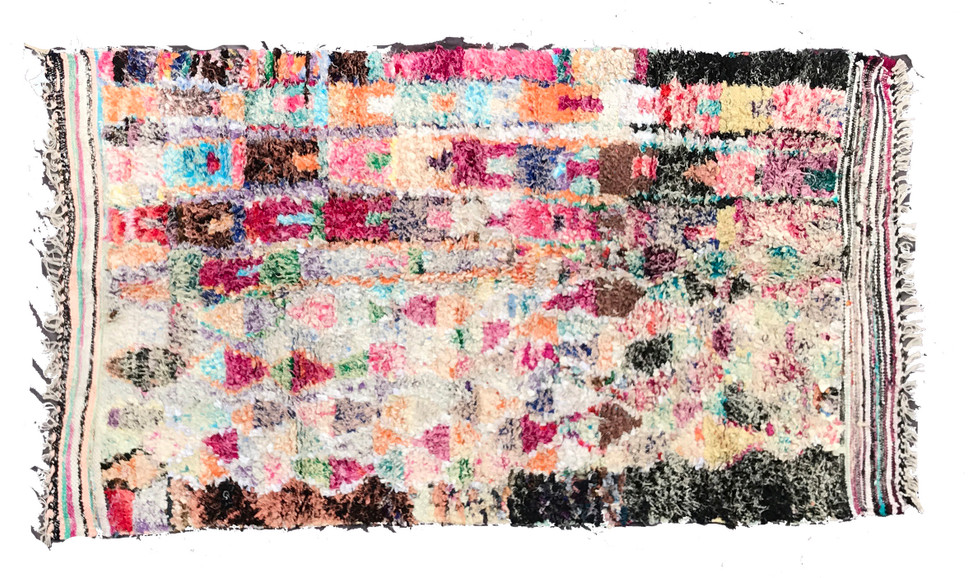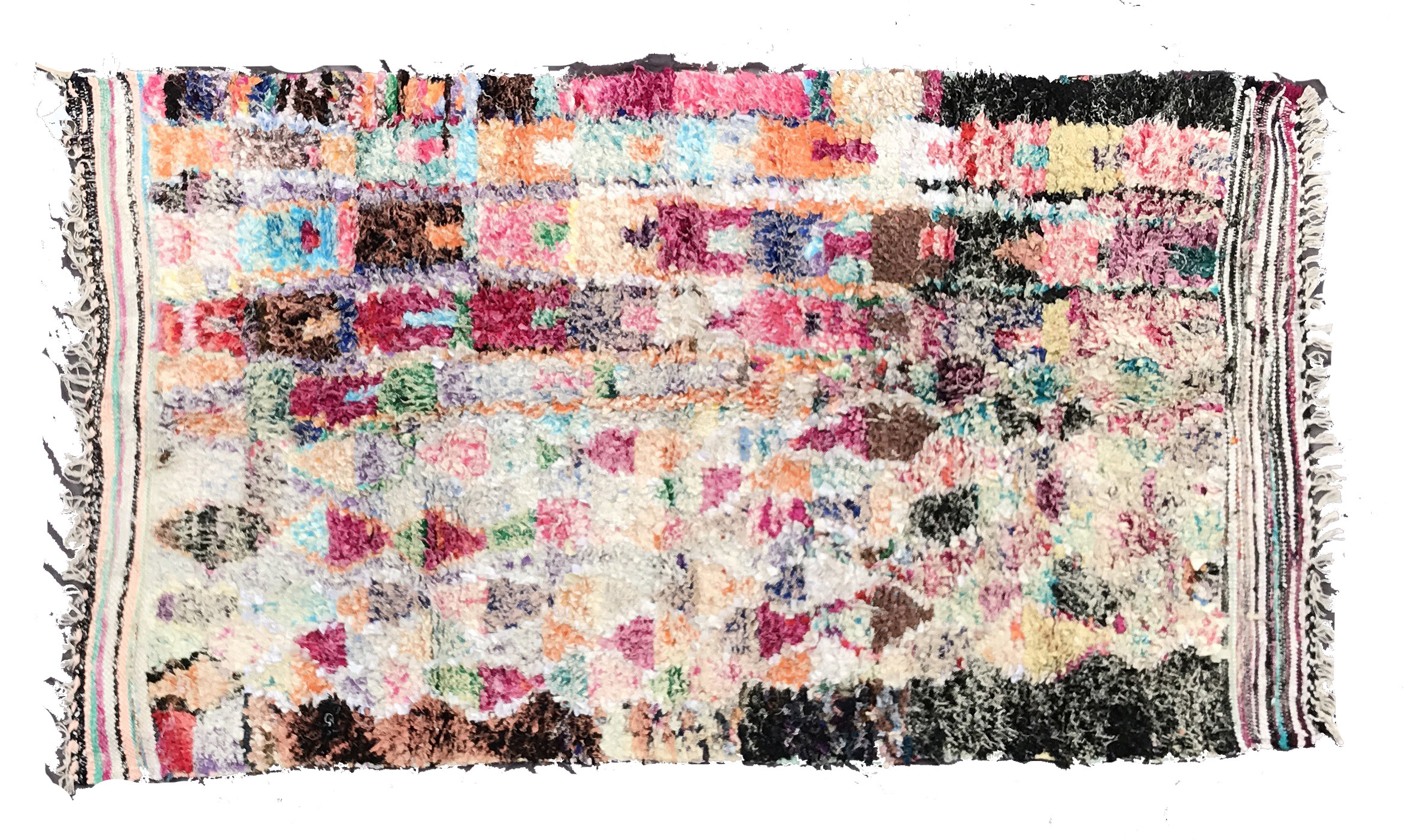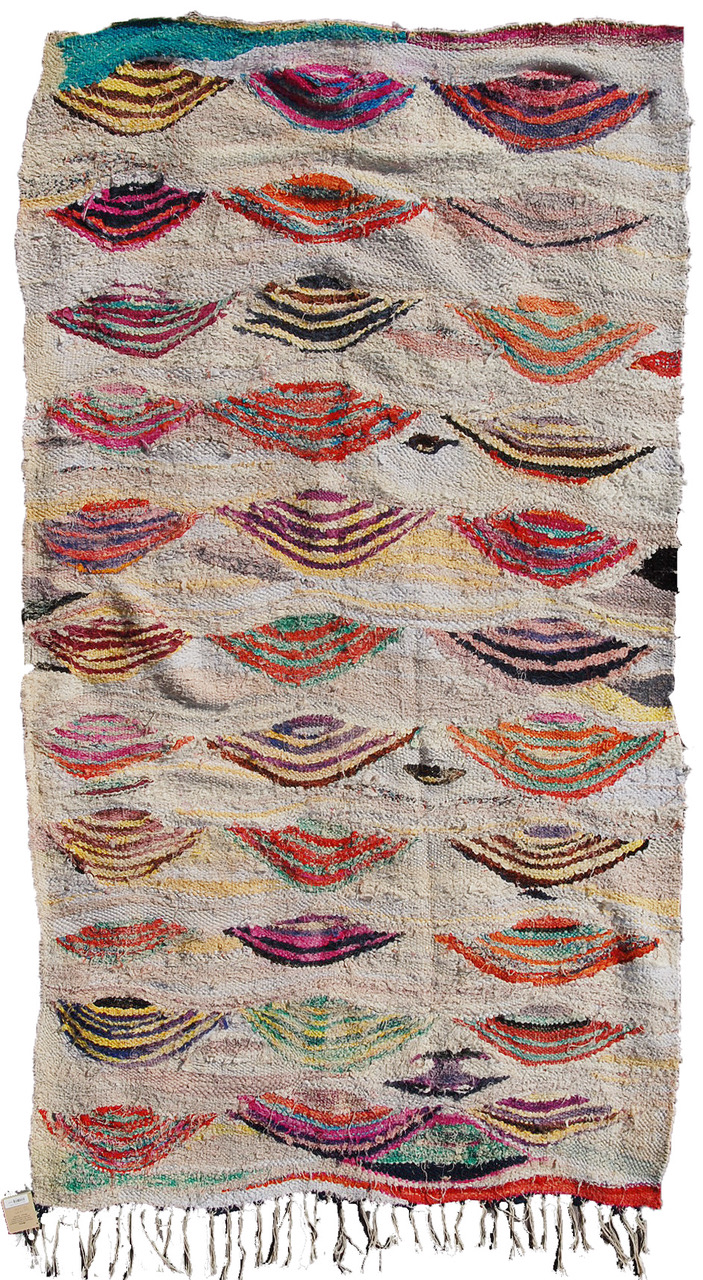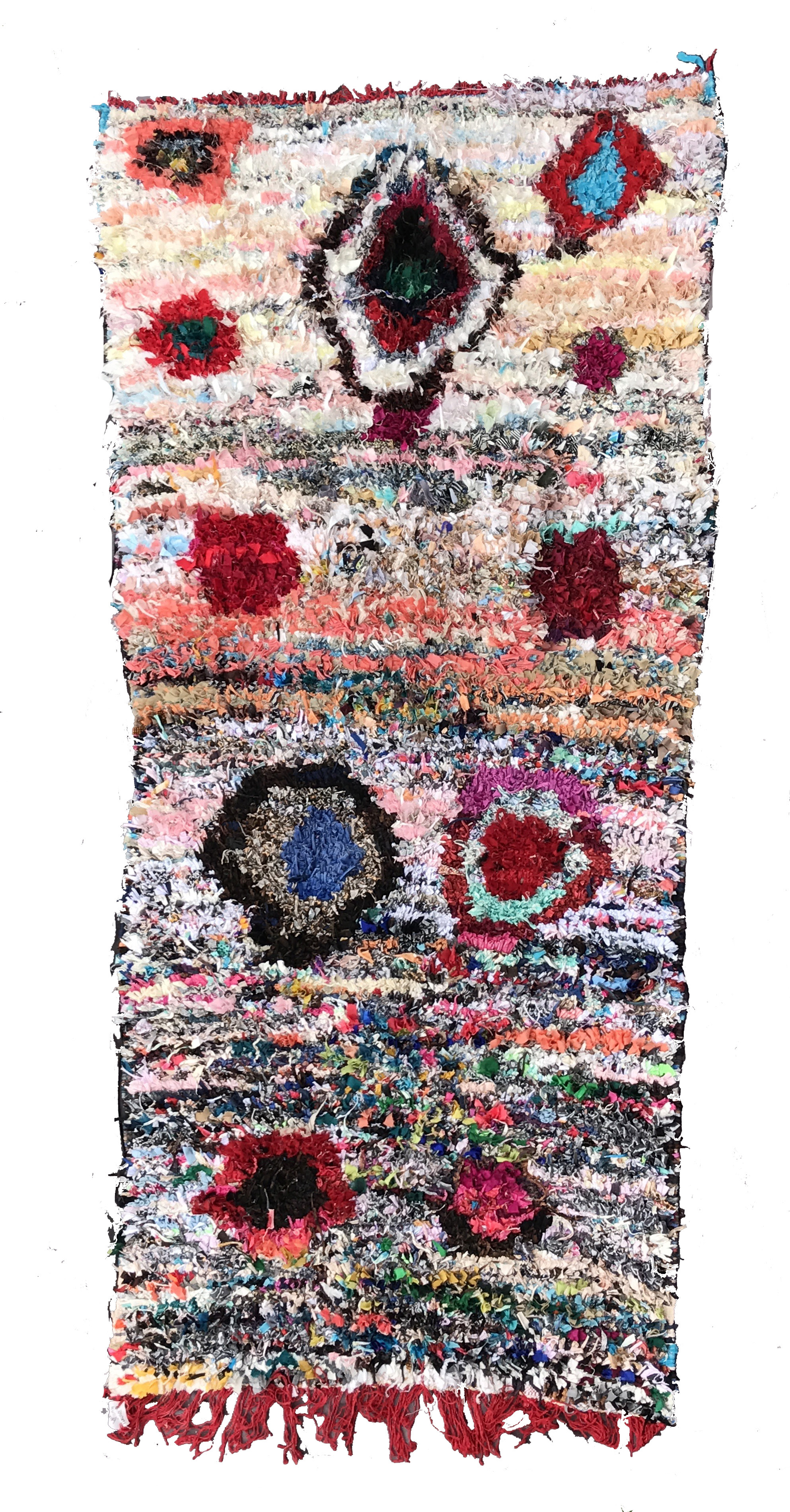
Style Guide: How to Affordably Hang a Handmade Rug as Art on Your Wall
Posted by Angie Brown on 9th Jul 2017
Here at Cultural Cloth we surround ourselves with beautiful handmade textiles in our home decor. Some of our textiles are museum quality handmade heirlooms that deserve preservation and expensive protection, others are beautiful to us because they are worn and tattered. They remind us of someone, somewhere or some time.
Last week a customer in the shop expressed interest in using one of our larger Moroccan boucherourite rugs as art on her wall. She thought that the rugs had so much visual detail that she was convinced that she would never get tired of looking at it.
Since the rug was so big, she also thought that it could be fairly affordable way to decorate a large space but she was concerned that figuring out how to hang it on the wall could get expensive. She wondered if we had any ideas?
We talked for a while and here is our list of ideas:
- The easiest, fastest and cheapest way to hang a
boucherouite is to simply use bulletin board push pins. The shaggy pile covers the push pins. We do this all the time in the shop since we
are always moving things around. The
downside is that you mark your wall and potentially cause a weakness in the handmade
textile.

- At home, we have also used the carpet tack strip for wood subflooring which has small nails on the front and can be pounded into the wall with provided nails. After installing the strip on the wall, you simply press the backside surface of the textile into the tack strip. For this to work, the textile cannot be too heavy. The tack strip can be painted to match the wall. It is possible that the nails could cause a weakness in the handmade textile.
- Mary Anne also worked with a customer who had a very heavy rug and the customer was concerned that the tack strip would not be sturdy enough to hold the rug. She painted a piece of wood slat and nailed several nails that were at least 1 inch long from the back of the board. The nails were be spaced 4-6 inches apart. The customer then nailed the slat board to the wall and hung the rug from the nails. Again, it is possible that the nails could cause a weakness in the handmade textile.
- We have also used Velcro® to hang textiles. In this video, the contractor demonstrates how to hang a rug with hook and loop fastener, Velcro. This solution doesn’t mar the wall or pierce
the textile. It is possible that the
glue could adhere to the textile but it is easy and fast. The best tip of the video is towards the end when he advises to sandwich the
hook and loop sides of the
 Velcro together before hanging so that you don’t
have to perform all sorts of precise measurements. Another tip, we learned the
hard way is to fold the textile in half and start in the middle working to the
end so that you don’t have any gaps. You might need an extra set of hands to
hang the rug. The Velcro website says
that a 4” x 2” piece of Velcro will hold 8 pounds. Buy Velcro that specially
made to affix to fabric.
Velcro together before hanging so that you don’t
have to perform all sorts of precise measurements. Another tip, we learned the
hard way is to fold the textile in half and start in the middle working to the
end so that you don’t have any gaps. You might need an extra set of hands to
hang the rug. The Velcro website says
that a 4” x 2” piece of Velcro will hold 8 pounds. Buy Velcro that specially
made to affix to fabric. - For the textile conservator’s point of view, we consult the Textile Museum at George Washington University. They have a great step-by-step guide that walks you through the process they use when displaying “museum quality” textiles. Start by first sewing the loop side of the Velcro to canvas webbing and then stitching the webbing to the rug. Next you staple the hook side of the Velcro to a piece of wood slat and affix the slat to the wall. This is the safest way to display your texile, but it is also more work.
- There is one more DIY handmade textile display idea that we would like to share with you. This YouTube video shows you how to install a “display rod” on your wall and hang a collage of your favorite textiles from it. This video installs a dowel but you could also use a rod with finial ends for a different look. We like this treatment because it gives you the chance to “change it up” often. This collage is easy to change with the season or when you have added a new treasure to your collection.


